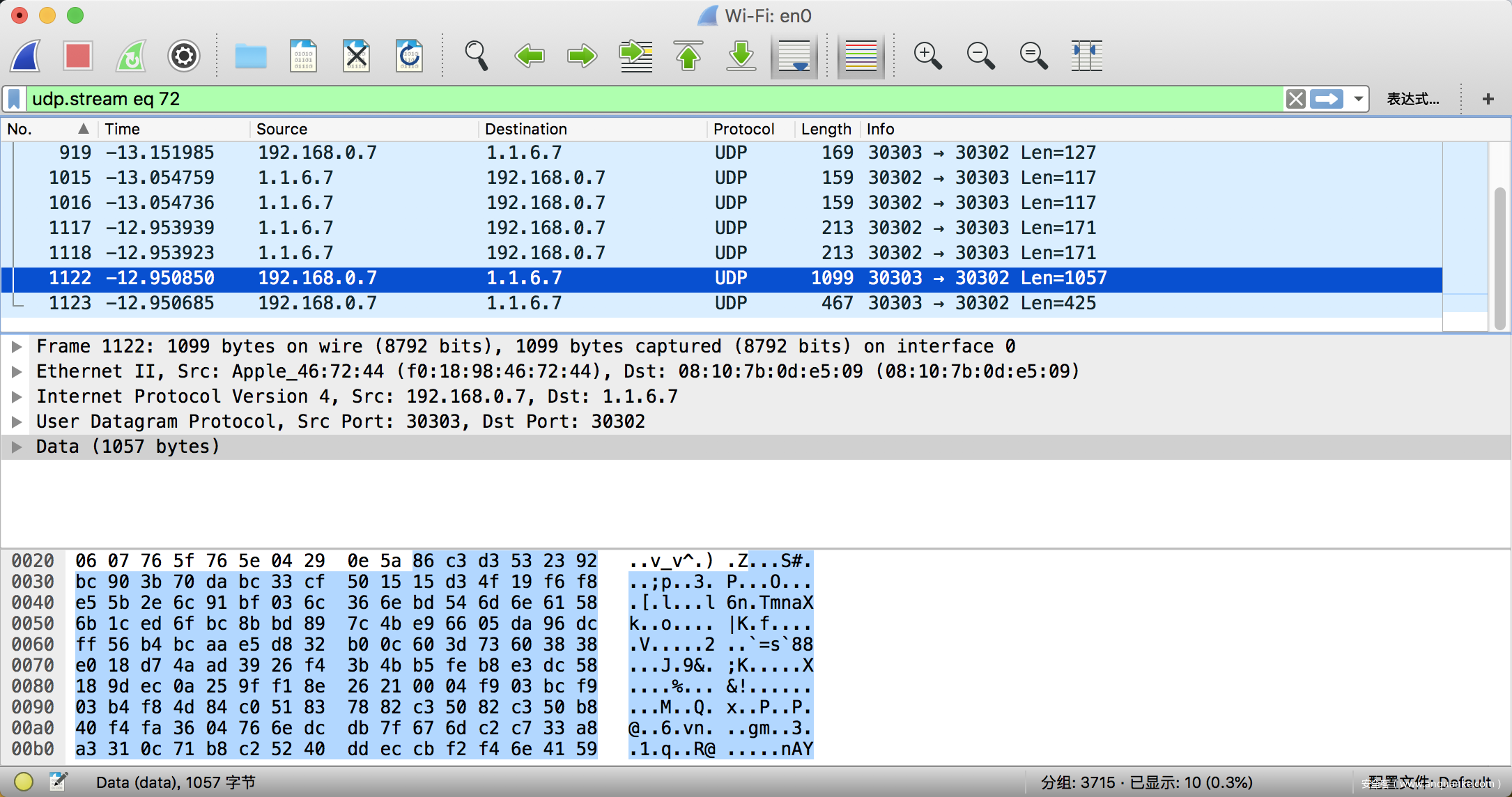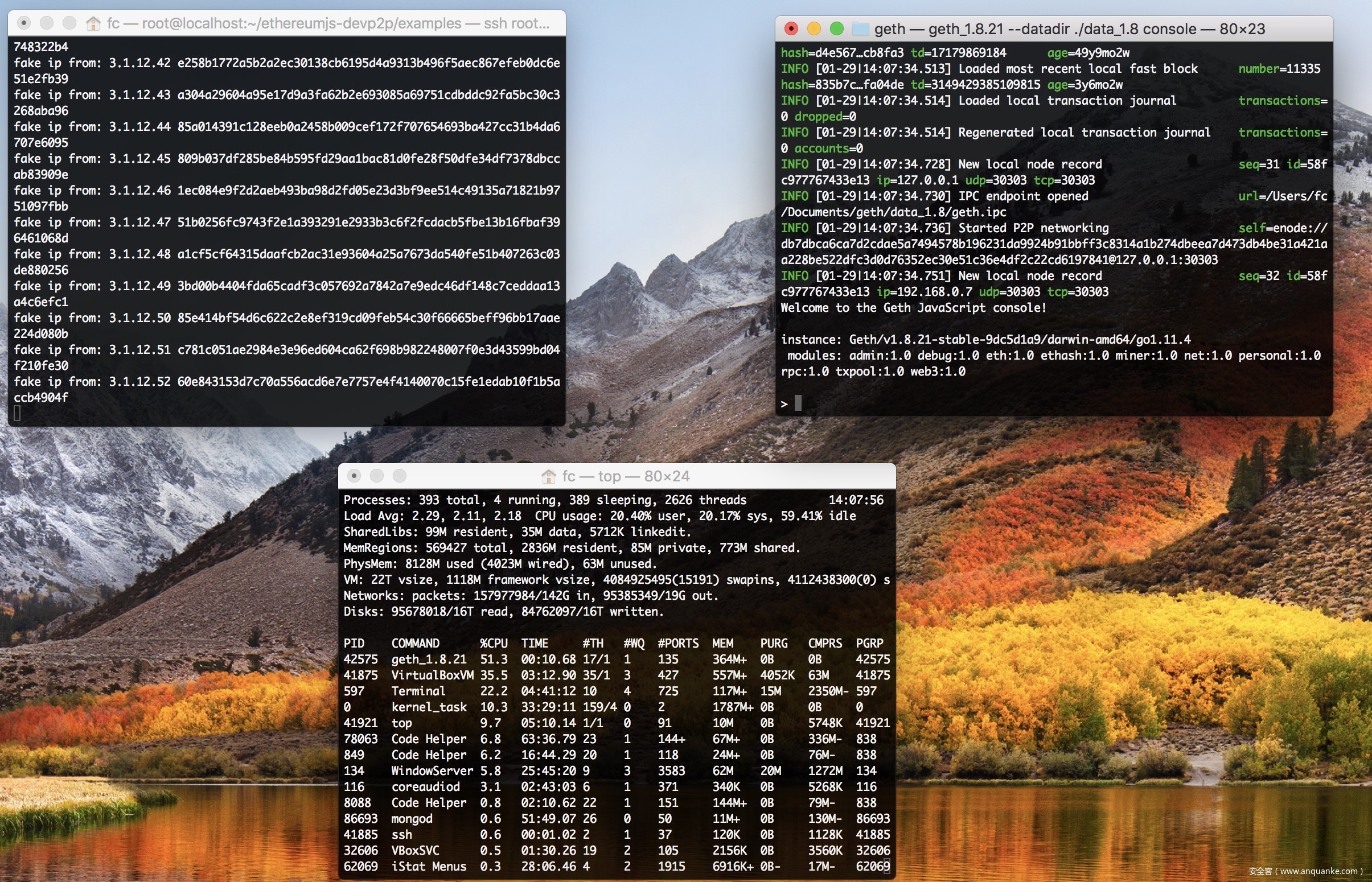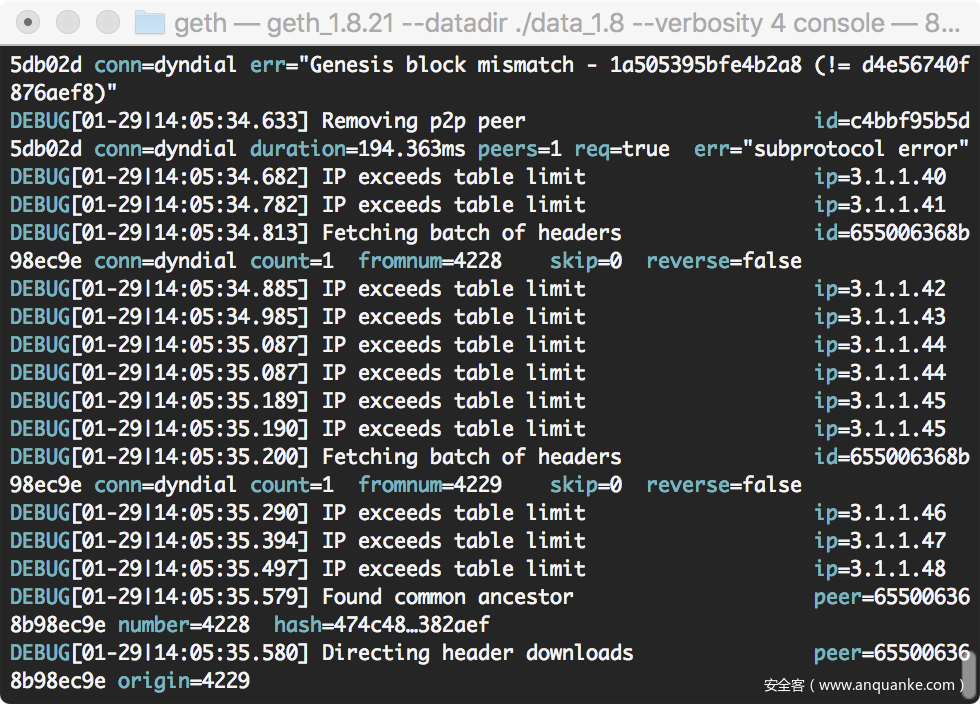以太坊UDP流量放大反射DDOS漏洞
责编:gltian |2019-02-14 13:44:58漏洞影响
该漏洞表面上是一个放大5倍udp反射DDOS漏洞,但其对ETH的P2P网络的影响是非常大的,但是这个漏洞有很大的两个副作用,一个是ETH的发现节点池会不断的被堆满,导致正常节点无法加入,二是可屏蔽被攻击节点无法探索到任意子网的节点。
漏洞分析
先让我们来看看ETH P2P发现协议的文档,在https://github.com/ethereum/devp2p/blob/master/discv4.md这篇ETH P2P发现协议文档里是有对udp反射DDOS做防御的。
Pong Packet (0x02)
packet-data = [to, ping-hash, expiration]
Pong is the reply to ping.ping-hash should be equal to hash of the corresponding ping packet. Implementations should ignore unsolicited pong packets that do not contain the hash of the most recent ping packet.
其方法就是通过签名PIng包并且让对方主机回复的Pong包要带上之前Ping包的hash才可以通过校验。这个从设计上来说是没什么问题的,然而go-ethereum在实现该协议的时候出了问题。
让我们来看看go-ethereum是怎么实现该协议的,在https://github.com/ethereum/go-ethereum/blob/master/p2p/discover/udp.go#L618
func (req *ping) handle(t *udp, from *net.UDPAddr, fromKey encPubkey, mac []byte) error {
if expired(req.Expiration) {
return errExpired
}
key, err := decodePubkey(fromKey)
if err != nil {
return fmt.Errorf("invalid public key: %v", err)
}
//收到ping包后马上回复pong包
t.send(from, pongPacket, &pong{
To: makeEndpoint(from, req.From.TCP),
ReplyTok: mac,
Expiration: uint64(time.Now().Add(expiration).Unix()),
})
n := wrapNode(enode.NewV4(key, from.IP, int(req.From.TCP), from.Port))
t.handleReply(n.ID(), pingPacket, req)
//如果没通过pong校验则发送一个ping包进行pong校验,如果通过pong校验则加入发现节点池
if time.Since(t.db.LastPongReceived(n.ID())) > bondExpiration {
t.sendPing(n.ID(), from, func() { t.tab.addThroughPing(n) })
} else {
t.tab.addThroughPing(n)
}
t.localNode.UDPEndpointStatement(from, &net.UDPAddr{IP: req.To.IP, Port: int(req.To.UDP)})
t.db.UpdateLastPingReceived(n.ID(), time.Now())
return nil
}
由于我们是第一次连接,所以要进行pong校验,我们来看看go-ethereum是怎么实现协议中的pong校验的,在https://github.com/ethereum/go-ethereum/blob/master/p2p/discover/udp.go#L645
func (req *pong) handle(t *udp, from *net.UDPAddr, fromKey encPubkey, mac []byte) error {
if expired(req.Expiration) {
return errExpired
}
fromID := fromKey.id()
//开始处理pong,如果没有请求过pong,就返回错误
if !t.handleReply(fromID, pongPacket, req) {
return errUnsolicitedReply
}
t.localNode.UDPEndpointStatement(from, &net.UDPAddr{IP: req.To.IP, Port: int(req.To.UDP)})
//刷新pong时间,通过pong校验
t.db.UpdateLastPongReceived(fromID, time.Now())
return nil
}
可见只要通过t.handleReply的校验我们就可以刷新pong时间通过校验了,让我们来看看t.handleReply 是怎么处理的https://github.com/ethereum/go-ethereum/blob/master/p2p/discover/udp.go#L369
func (t *udp) handleReply(from enode.ID, ptype byte, req packet) bool {
matched := make(chan bool, 1)
select {
//放入gotreply等待返回matched
case t.gotreply <- reply{from, ptype, req, matched}:
// loop will handle it
return <-matched
case <-t.closing:
return false
}
}
我们继续往下追
case r := <-t.gotreply:
var matched bool
for el := plist.Front(); el != nil; el = el.Next() {
p := el.Value.(*pending)
if p.from == r.from && p.ptype == r.ptype {
//是否有拉取过请求,有则matched为true
matched = true
// Remove the matcher if its callback indicates
// that all replies have been received. This is
// required for packet types that expect multiple
// reply packets.
//对应的callback校验,然而就算p.callback返回为false,matched也为true
if p.callback(r.data) {
p.errc <- nil
plist.Remove(el)
}
// Reset the continuous timeout counter (time drift detection)
contTimeouts = 0
}
}
r.matched <- matched
这里基本能看出问题了,p.callback返回了false,只要不抛出错误,matched还是true,校验就算通过了,我们再来看看pong校验的callback是怎么处理的https://github.com/ethereum/go-ethereum/blob/master/p2p/discover/udp.go#L294
func (t *udp) sendPing(toid enode.ID, toaddr *net.UDPAddr, callback func()) <-chan error {
req := &ping{
Version: 4,
From: t.ourEndpoint(),
To: makeEndpoint(toaddr, 0), // TODO: maybe use known TCP port from DB
Expiration: uint64(time.Now().Add(expiration).Unix()),
}
packet, hash, err := encodePacket(t.priv, pingPacket, req)
if err != nil {
errc := make(chan error, 1)
errc <- err
return errc
}
//这里就是pong校验的callback,可见就算没通过校验也只是返回了false
errc := t.pending(toid, pongPacket, func(p interface{}) bool {
ok := bytes.Equal(p.(*pong).ReplyTok, hash)
if ok && callback != nil {
callback()
}
return ok
})
t.localNode.UDPContact(toaddr)
t.write(toaddr, req.name(), packet)
return errc
}
所有,实际上go-ethereum并没有很好的实现pong校验,导致协议设计的防御机制彻底失效。
漏洞利用
- 伪造udp源地址
- 构造ping包发送到geth的p2p发现协议UDP端口,拉取pong请求
- 构造pong包发送到geth的p2p发现协议UDP端口,hash留空即可
- 然后再发送findnode包即可发射5倍以上udp流量
由于官方还未修补该漏洞,所以暂时不公布POC
漏洞演示
下面用go-ETH最新版1.8.21来演示
成功将UDP流量放大5倍反射到1.1.6.7
单个虚拟机测试,CPU占用率轻松达到50%
屏蔽受害节点无法发现指定网段节点:



